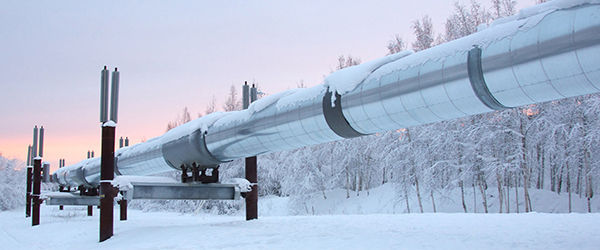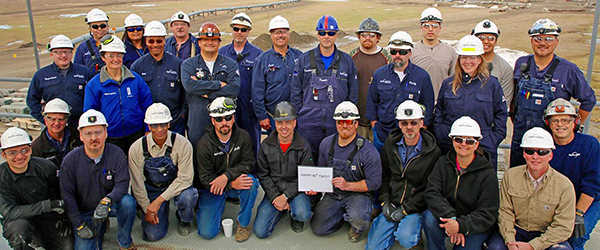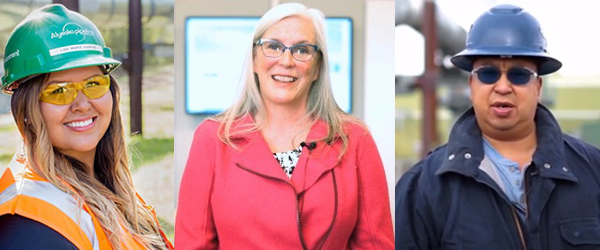2019: Scott “Chip” Conroy Q&A
“The people who designed and built this pipeline – the entire state owes them a great debt of gratitude. The work that they did fundamentally changed the history of this state. … The ingenuity and the innovation that is required to keep this line going is really inspiring.”
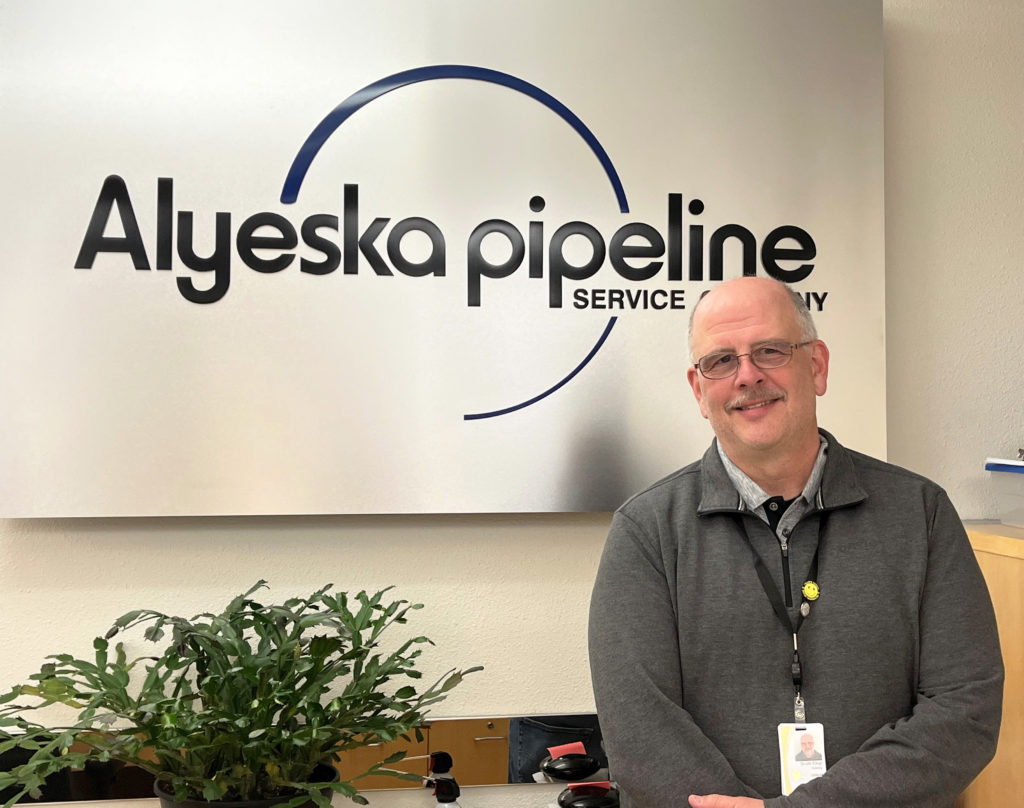 Scott “Chip” Conroy, Lead Controller at the TAPS Operations Control Center, started at Alyeska in 1979, just one year before the 1 billionth barrel traveled from the North Slope to Valdez. He was 17 years old and not yet a high school graduate. In 2019, Chip reached 40 years on TAPS. Today, 43 years and 18 billion barrels after being hired, Chip reflects on his memories and milestones on TAPS.
Scott “Chip” Conroy, Lead Controller at the TAPS Operations Control Center, started at Alyeska in 1979, just one year before the 1 billionth barrel traveled from the North Slope to Valdez. He was 17 years old and not yet a high school graduate. In 2019, Chip reached 40 years on TAPS. Today, 43 years and 18 billion barrels after being hired, Chip reflects on his memories and milestones on TAPS.
What do you remember about your first days working for Alyeska?
“Alyeska had a very extensive summer hire program. I was selected for the program and placed at the Bragaw headquarters. I remember the first day, I was nervous as heck. I was all dressed up – I had a tie on, slicked back hair and dress shoes. I went through orientation in the morning and received my placement just before lunch. The department I was assigned to was General Services, and consisted of mostly entry-level type jobs – mailroom, couriers, that sort of thing. At lunch, I was told to lose the tie and quit saying “yes ma’am” to the young woman in charge of the department. I was offered a permanent position a few weeks after I started the summer hire program. At that time, Alyeska and TAPS were bigger than life. We all knew what it was, what it meant to our state. You could feel that energy at the company. There was a lot of opportunities for young Alaskans. It was a really exciting time to work at Alyeska.”
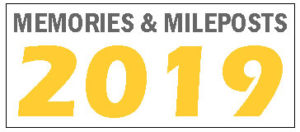
What are the different jobs you have held on TAPS over your career?
“For the first few years, I worked in the same department, I was given the opportunity to progress up through different jobs and receive new responsibilities – mailroom, courier, the printshop. My first big jump was being assigned to work at the distribution warehouse. It was a big step for me financially, as well as in responsibility. I worked there for about three years. It was really enjoyable because it was closer to the operations side of the business; I felt more in-tune with what was going on with pipeline. At the warehouse, you could directly see the supplies and freight going to different locations along the pipeline and Valdez.
“I worked in Anchorage until 1993 when the company outsourced the distribution warehouse. The company did a great job of transferring folks within the company. I was given the opportunity to work at Pump Station 1 as a materials handler for a few years. A time came along that Pump Station 1 was shorthanded and they asked me and my alternate to assist with other duties and operations. The company encouraged us to complete OJT forms to get credit for the work that we were doing outside of our handler duties. There were two great supervisors that approached us and encouraged us to go into operations temporarily for about a year and earn our Level 3 technician sign off. With that opportunity, I was able to get Level 3 tech experience, which resulted in being prepared to fill a vacancy when one occurred. Shortly after my cross-training was complete, I was offered a full-time tech position. I worked as a tech at Pump Station 1 for five or six years, right up to the start of Strategic Reconfiguration (SR), when I was offered a position at the Operations Control Center (OCC) as a controller.”
What was your favorite job on TAPS and why?
“I think that my favorite job would have to be working at the distribution warehouse in the early years of operations. It was my favorite for a combination of reasons – it was my first ‘adult job’ and it gave me the opportunity to work with a great team of folks, driven each day to get the freight in the door, turned around and out the door to the pump stations and Valdez. It was my first real connection to operations and what was happening on the line. Becoming a tech was great, too; working at OCC is equally amazing, as well.”
Do you have a “best day on TAPS?”
“My best day on TAPS is November 13, 1987, the day that I met my wife. She was working as a contractor at the Bragaw headquarters. My second best day on TAPS is the day that I became a Level 6 tech. It was a big personal goal for me. Folks that knew me growing up would say “Wow, he couldn’t even change the oil in his car, how could he do anything at a pump station?” It took me a little bit longer, over 20 years from my hire date, as my fellow techs would jokingly point out to me. It was definitely my proudest moment on TAPS.”
Do you have a favorite spot or facility on the pipeline? What is it and why?
“I think that I would have to say Pump Station 1. You can have one day where it is total whiteout conditions, where you are shoveling snow and you can’t leave the pump station for three days. A few weeks later, it is sunny out, not a cloud in the sky and you are watching a herd of caribou running down the corridor. You can go down to the Sag River and see musk-ox and bear. A really close second is Valdez. I was there temporarily for a couple of years. On those beautiful days – doesn’t matter what time of the year it is – sitting in the OCC control room, looking out the window and seeing the berths and the tankers coming in, the harbor and the mountains behind it. It is hard to beat that view from the terminal.”
The transportation of 18 billion barrels is quite a milestone for TAPS. Did you imagine reaching that milestone when you started in 1979?
“The people who designed and built this pipeline – the entire state owes them a great debt of gratitude. The work that they did fundamentally changed the history of this state. At the beginning of operations, everyone had so much optimism about TAPS. It was thought that operations would last for 20 years and the pipeline would transport 9 billion barrels of oil. Now, we are sitting here at 45 years of operations, and over 18 billion barrels through the pipeline. I certainly didn’t think that I would see that milestone. In the late 1980s, when the line was moving 2 million barrels a day it was really exciting and it was hard work. But I think that it is just as exciting and difficult to move 500,000 barrels a day. The ingenuity and the innovation that is required to keep this line going is really inspiring.”
After 43 years, what advice would you give to new employees?
“Take pride in the work that you do and enjoy it. Every job is significant and contributes to our responsibility to safely, responsibly and efficiently move oil from the North Slope of Alaska to Valdez. Alyeska is a great company and I have always been proud to say that I work for Alyeska. Over the course of the 43 years, a number of things have changed, but what hasn’t changed is the respect that people have for each other and for the work that they do, and I hope that never changes. I have been really, really lucky to have a career on TAPS. Alyeska gave me the opportunity to go from working in the mailroom to becoming an OCC Controller. I am so grateful. I believe that the company is in good hands and will continue to be the best pipeline company in the world.”
